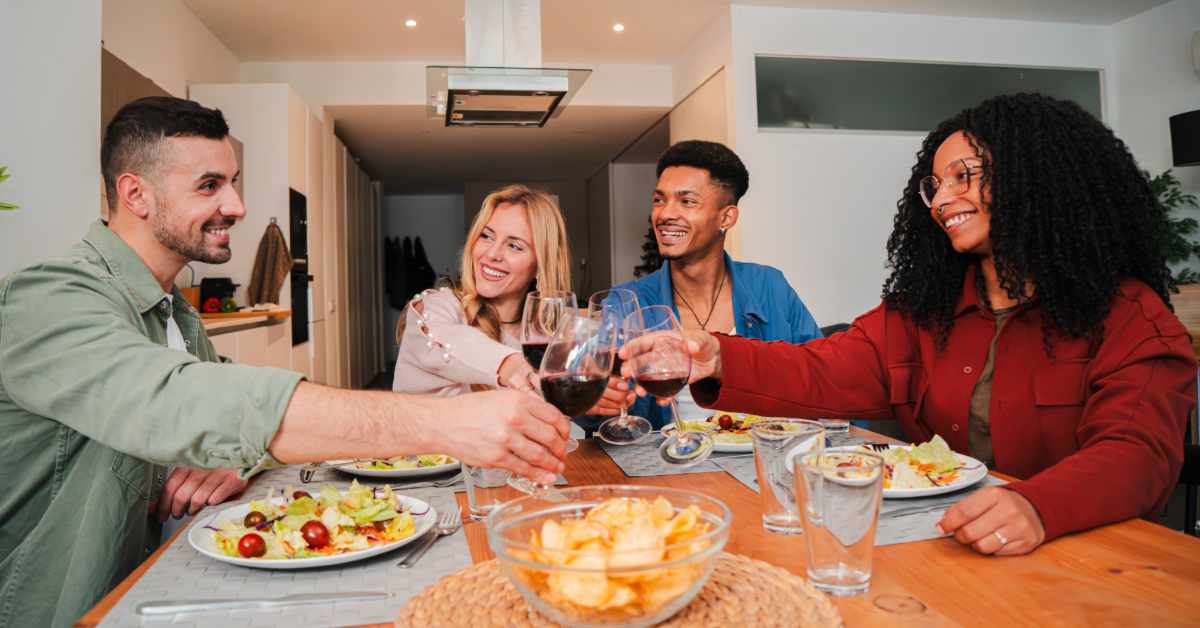In Denmark, many people rarely invite guests home for dinner, but writer and journalist Gudrun Marie Schmidt has made it a part of her family’s everyday life. Her open-door policy shows how simple hospitality can strengthen relationships in a busy world.
Everyday Dinners Without Planning
It is common for Gudrun Marie Schmidt not to know how many people will join her dinner table on a regular weekday. Sometimes her stepdaughter and her boyfriend drop by, other nights her father or her children’s friends join unexpectedly. In her home in central Copenhagen, the rule is clear: everyone is welcome.
While many Danes say they seldom invite people home except for birthdays or holidays, Gudrun believes that everyday meals create stronger connections. A recent survey by Danish media showed that nearly one in four Danes never invite people to dinner without a special occasion. This trend mirrors how traditional dinner gatherings have faded over time as social life has moved outside the home.
The Spirit of Danish Hospitality
Gudrun Marie’s attitude reflects an old Danish way of showing care through food. Sharing a simple meal, even with limited ingredients, is a sign of togetherness. In Danish culture, preparing food for others is often seen as an act of affection. It is not about perfect hosting but about being open and spontaneous.
This approach also challenges modern Danish social habits. Some newcomers and expats in Denmark find it difficult to build close relationships with Danes because invitations to private homes are rare. Having regular dinner guests, as Gudrun does, breaks that pattern and makes it easier to connect—a habit explored in guides on how to make Danish friends.
A Table That Keeps Growing
Gudrun Marie Schmidt is a culture journalist at the newspaper *Politiken* and a published author. She lives with her husband and three children, aged 11, 16, and 20. Her stepdaughter, now 28, also lives nearby. Because of her open invitation, it is common for two or three unexpected guests to join their weekday meals.
Her father, who lives just around the corner, often drops in as well. Sometimes he stays to watch television, other times he simply eats and leaves. The atmosphere is relaxed, and food is rarely a problem. If there isn’t enough chicken or meat, they simply add something else—maybe toast some rye bread, a Danish staple.
Learning Generosity at Home
Gudrun traces her attitude back to her father, who raised her with the idea that the door should always be open at mealtimes. Even though he doesn’t remember passing on the saying, it became a core principle in her life. For her, spontaneous meals are not just practical—they are meaningful.
They allow her to stay connected with her children as they grow older and spend more time outside the home. She sees it as a true gift that she gets to know their friends in such an easy and natural way. The meal becomes a shared space where life unfolds without much planning or formality.
The Value of Everyday Gatherings
While Denmark is often known for its sense of privacy and modesty, everyday gatherings like Gudrun’s remind people of how comfort and connection can thrive through simple traditions. Sharing food, no matter how small the dish, builds trust and warmth that lasts beyond the dinner table.
At the same time, initiatives across the country are helping younger generations rediscover what shared meals mean in Danish culture. More schools are now teaching about traditional foods and their social role, showing how food traditions carry both history and emotion in everyday life.
Gudrun Marie Schmidt’s way of opening her home shows that genuine hospitality does not require a fancy meal or perfect planning. It only takes a willingness to share—and that is something anyone can bring to the table.
Sources and References
DR: Gudrun Maries familie og venner ved, at de altid kan spise med hjemme hos hende
DR: En stærk middagstradition blegner: ‘Det sociale liv er flyttet ud af boligen’
The Danish Dream: Secret guide to making Danish friends
The Danish Dream: Danish food traditions enter the classroom with new lessons







